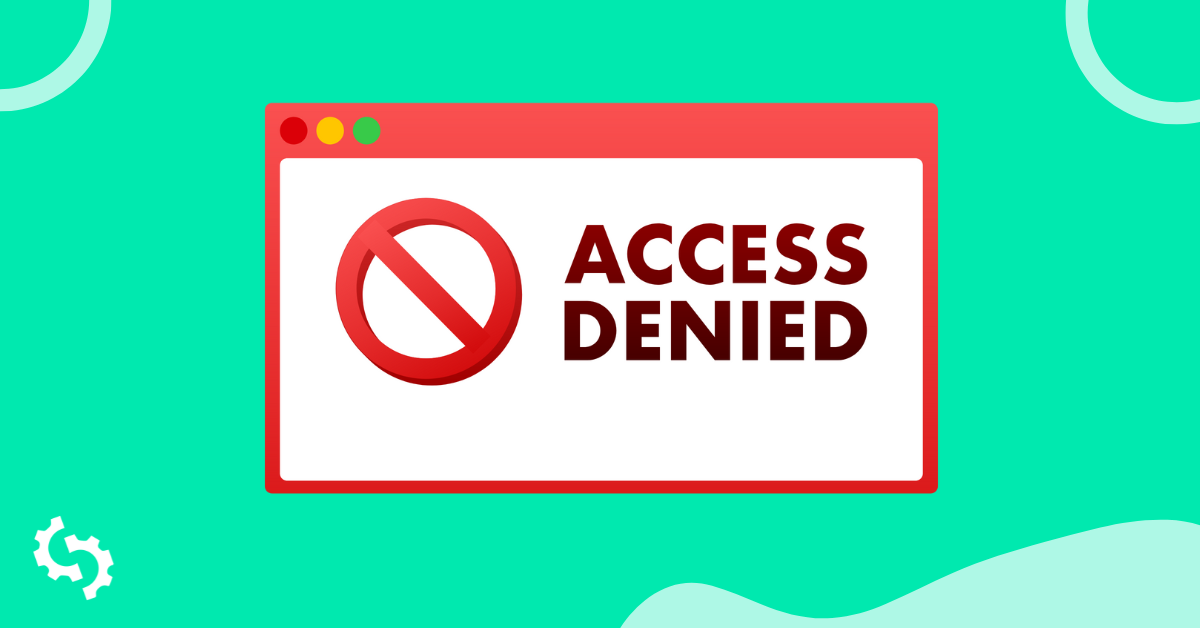
There's really only one way to pretty much guarantee your site is "Google-proof."
And that's by building a backlink portfolio full of high-quality organic backlinks.
Do that, and you'll never need to worry about Google algorithm updates again.
Today, I'm going to show you the best ways to:
- Get more organic backlinks to your site, and
- Find an endless supply of organic backlink sources.
But first, let's briefly talk about what organic backlinks are and why they're so important.
Getting Started with Organic Backlinks
What Are Organic Backlinks?
"Organic backlink" is just a fancier way of saying natural backlink.In other words:
It's a link that's naturally placed by a real person on their site when they think it's beneficial for their audience and adds value to their website.
What Are NOT Organic Backlinks?
If organic backlinks are natural links, then inorganic backlinks are unnatural links.
Simply put:
You don't want inorganic backlinks in your portfolio.
Why?
Because Google hates them. And if they see enough of them leading to your site, there's a good chance they'll penalize you as a result (meaning your rankings will suffer).
The good news is:
Inorganic backlinks are fairly easy to spot. They mostly consist of:
- Paid links
- Links from link swaps
- Links from low-quality directories
- Advertorials
- Exact-match keyword anchor text
If you see any of the above link types in your portfolio, your best course of action is usually to remove them as soon as possible.
Why Are Organic Backlinks so Important to SEO Success?
Because they're the best way to...
- Drive more targeted traffic to your site (both search engine and referred)
- Build relationships with key influencers in your industry
- Protect your site from virtually any future Google updates
Google loves organic backlinks. And most online marketers you see ranking at the top of Google do so by having more organic backlinks than their competitors.
For instance, look at Brian Dean from Backlinko. He used the strategy of updating one of his old posts (adding new info, updating the multimedia, etc.) to get 260% more organic traffic.
This is what his referring domains (read: organic backlinks) looked like after just two weeks:
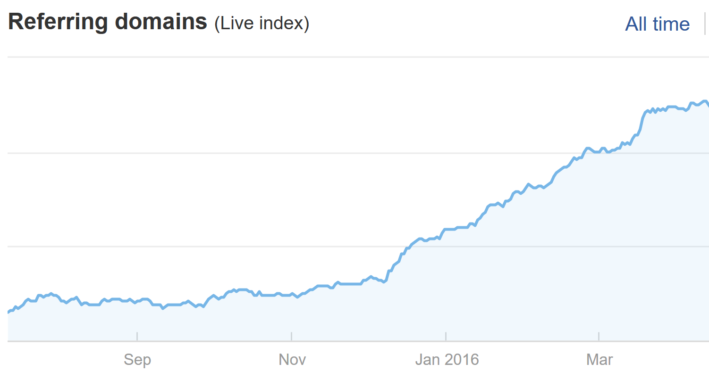
And this jumped his post up to the Page One/#6 spot on Google (where it still stands today):
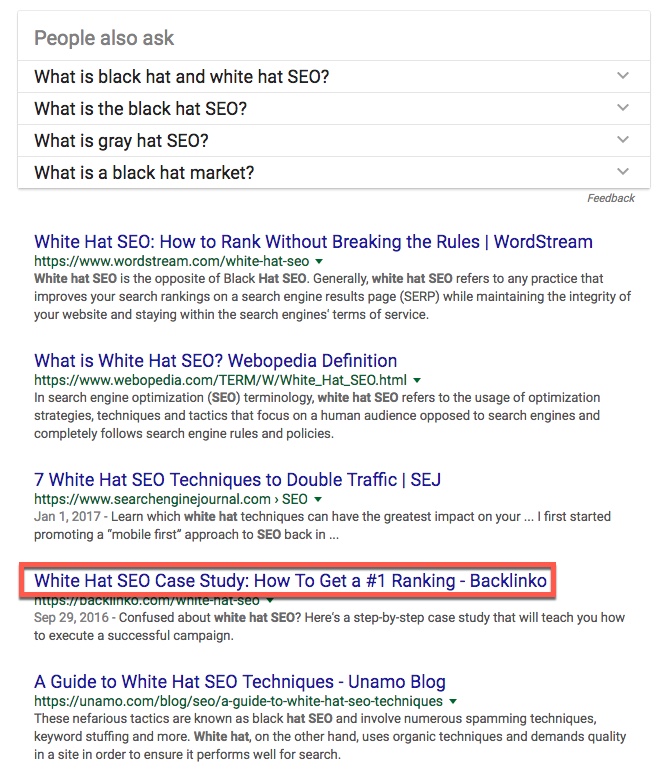
That's just one example of countless success stories stemmed from building organic backlinks.
They're the essential ingredient to creating a content marketing campaign that gets real, lasting results.
Here's a fun fact:
You can't get high-quality, organic backlinks without creating high-quality, original content.
It's the foundation of any successful link building campaign—so that's where we're going to start.
1. The Foundation: Linkworthy Organic Content
Now, there are a ton of resources available that show you what you need to do to create great content that attracts visitors, all of which have their own unique spin on how to do it "the right way."
While they can be helpful, it's confusing trying to decipher which tips and strategies make the most sense for the kind of content you create.
For instance:
What you do to create a high-quality curated post will be different than your strategy for creating a high-quality step-by-step post.
So the question is:
What can you do to guarantee you're churning out incredibly engaging content every time without having to constantly tweak your approach?
The answer:
Start with the right questions.
More specifically, ask yourself the following five questions before you even begin researching your post's topic:
1. Who do I need to emotionally impact or make feel important?
2. How can I provide specific and valuable advice to my audience about how to solve a common or unique problem?
3. What's special, unique or different about how I solve the problem?
4. How can I make the content easy to share with others?
5. What's the best way to get this content in front of the eyes of key influencers who can give me valuable organic backlinks?
Answering these questions puts you in the right mindset to create quality content every time regardless of the post type and medium you choose to use.
3 Essential Components of Every Piece of High-Quality Content Ever Published
I've already mentioned that high-quality content is the "Holy Grail" of effective organic link building.
Now, let's look at the three components that form the core foundation of any piece of content that attracts organic backlinks: usefulness, uniqueness and SEO.
Fail to incorporate them into your content, and you've already set yourself up for failure.
Usefulness
Your audience's main motivation for visiting your site is not to be entertained, but to be educated.
In most cases, they have a specific problem that needs solving.
And their hope is that your site will solve it.
With that in mind, useful content does two things for your audience:
1. It solves a specific problem. It addresses one of your audience's particular pain points, exposes the problem and then gives a definitive solution.
2. It can be put into action. The best content not only provides a solution but also gives very specific steps for how to execute the solution, often with step-by-step instructions.
Neil Patel is well-known for creating insanely useful content that ranks high on search engines.
First, he clearly defines the specific problem (and promises a desirable solution):
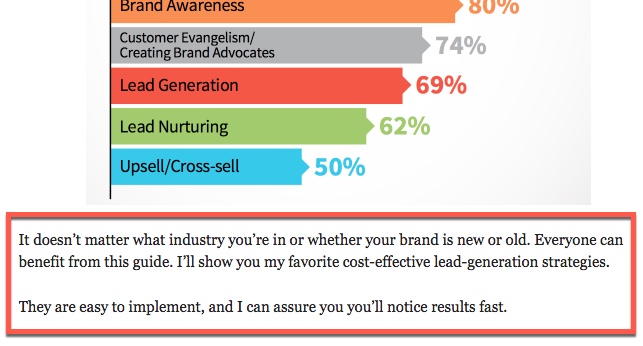
Then, he provides actionable strategies for solving the problem (complete with examples):
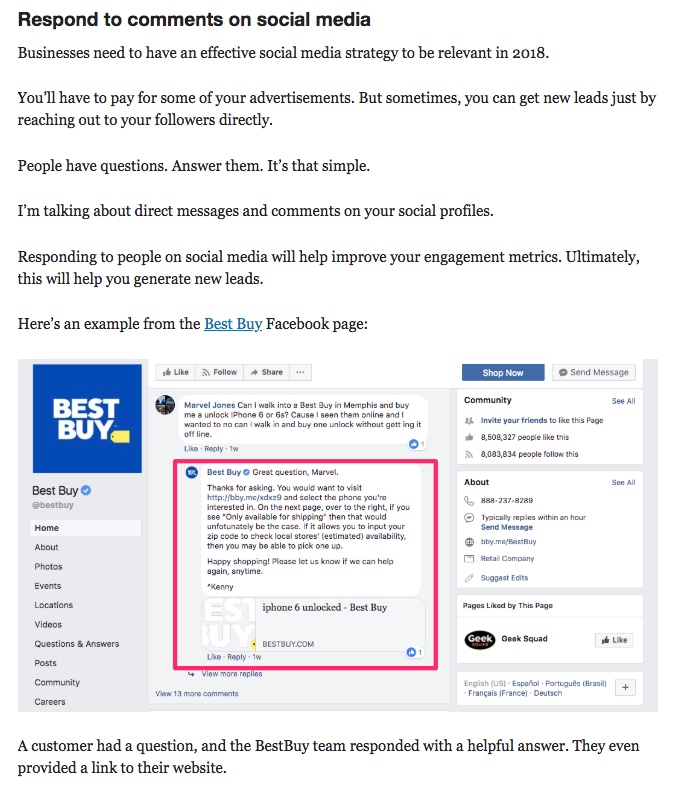
So with your next piece of content, do the following:
- Clearly define the problem you're solving.
- Develop a series of actionable steps your audience can take to solve the problem.
That's how you create truly useful content.
Uniqueness
Often times, creating useful content isn't enough to attract visitors. You also need to make it unique so it gets noticed by those who matter.
The question is:
How do you make your content unique?
There are two ways.
First, you create something that's completely original—a piece of content that focuses on a subject that's either never been addressed or never been done before.
Take this post by Tim Ferriss for example:

I've personally never seen a post on one-person businesses that make one-million-plus dollars per year before.
That doesn't mean there's never been one done on the subject. But, for what's probably a large demographic in his target audience, this is their first time being exposed to it.
And that's the key, right?
It's not the goal to be the first person to ever publish a piece on a particular topic. The goal is to be the first in your industry or niche to do so.
Do that and you'll have streams of influencers wanting to link back to your site.
Second, you either improve or put a unique spin on a pre-existing topic. The goal here is to be unique in how you present the content.
One of the easiest and most effective ways to use this strategy is to take a piece of already popular content (say, from a competitor) and make it better.
For example, let's pretend the most popular list post on keto diet foods has 20 foods listed on it.
In that case, this post from Kettle & Fire would blow the other one out of the water:
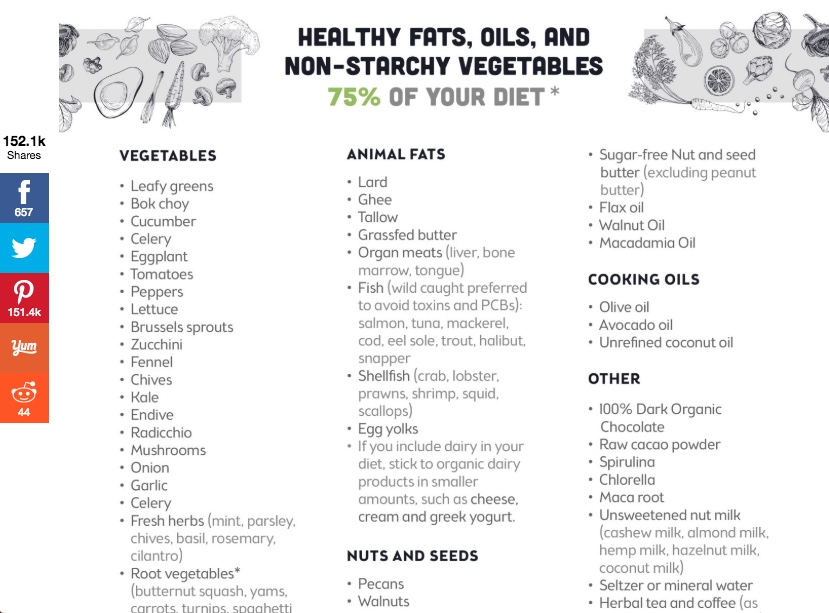
It has over 50 foods listed in the Healthy Fats section alone! Plus, it also contains essential information about how much fat to intake and the types of fat you should eat.
This wealth of information has made this post stand out in the midst of several posts of the same type...
...and is why it's received over 152,000 social shares to date.
Regardless of whether you create something completely original or put a new spin on old topics, make sure your content is unique in some way.
SEO
How does SEO help with getting more organic backlinks, you ask?
Because an SEO-optimized page helps you rank higher in search engines. And when you rank higher in search engines, more people are exposed to your content, creating greater visibility.
High-quality content + greater visibility = more organic backlinks
There are four key areas your SEO efforts should focus on:
1. On-page SEO
On-page SEO is still a huge ranking factor for Google. So you should always make it a priority.
On-page SEO includes everything from URL titles down to image optimization, and they're all important.
Now, covering all of the specific on-page SEO strategies is outside the scope of this post. But here's a great guide from Backlinko that will set you up for success.
Later on, I'll give you a list of things to do to make your content better, many of which will naturally boost your on-page SEO.
Just know this:
You cannot afford to not pay attention to on-page SEO. Take the time to do it right... with every post.
2. Mobile Friendliness
Google's recent mobile-first index update makes mobile optimization more important than ever.
Simply put:
If your site's not mobile friendly, your rankings are going to suffer.
The most direct way to have a positive impact on your site's mobile friendliness is to incorporate responsive design into your website.
What does responsive design do?
It optimizes your site based on the individual device each visitor uses.
Which means if a person visits your site on their mobile device, it will be just as user-friendly as for someone accessing it via their desktop or tablet.
3. Page Load Speed
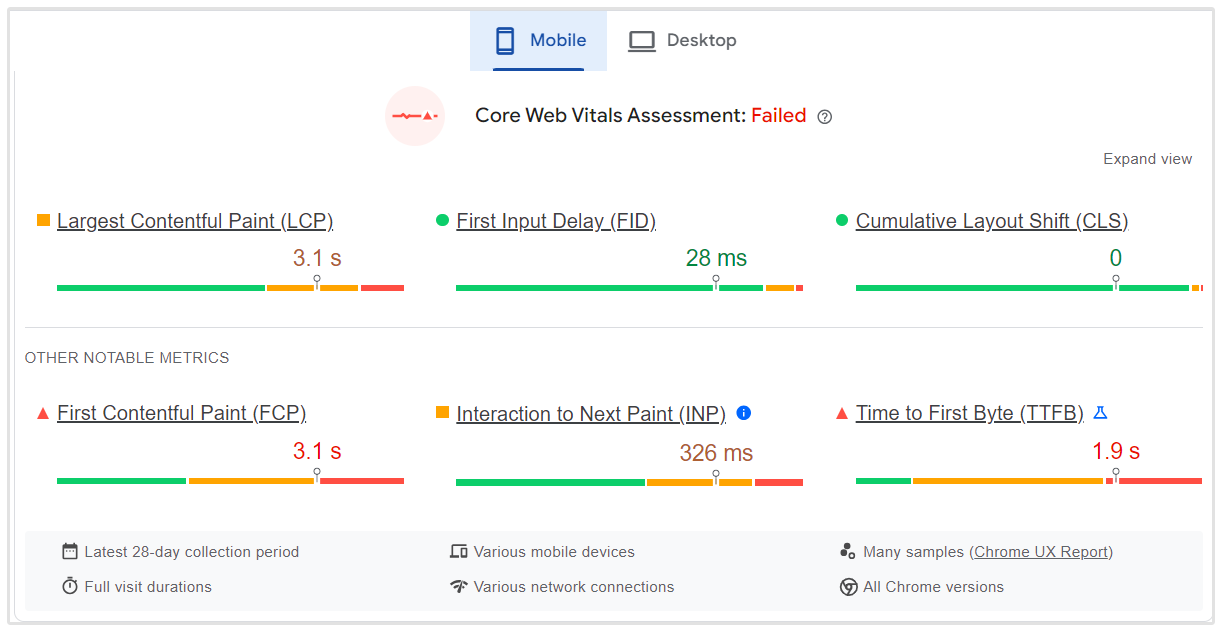
Google also values faster sites over slower ones.
So it only makes sense that you make your site load as fast as possible.
For starters, I strongly recommend you use a page speed tool like GTmetrix to check the current speed of your site and get recommended changes to speed it up.
And then use this guide to further ensure your site doesn't drop in the rankings due to speed.
4. Dwell Time
Last but not least is dwell time.
Dwell time is the length of time the average visitor spends on your site. And it's another incredibly important ranking factor for Google.
Why's that?
Because, typically, the longer a person stays on a web page, the more helpful and useful the content.
There are a few key things you can do to boost your site's dwell time and decrease its bounce rate. In the next section, you'll learn a few of the key ways to do it and make your content stand out from the pack.
In-Content Tactics to Use to Attract More Organic Backlinks
Every 60 seconds online there are:
- +-700 hours of video being watched
- 3.8 million searches conducted on Google
- 350 000 tweets sent

Needless to say:
Every day it gets more difficult to get noticed online—by search engines, key influencers and most importantly, your target audience.
If you want to be seen and heard, you better bring something to the table that demands attention.
By doing the things we discussed earlier, your content will be leaps and bounds better than 98% of what's already out there.
But the following eight tips below will push you to the top.
Use these tactics liberally in your content to take it from "great" to "magnificent" and get noticed by the people who matter.
1. Optimize Your Headings
All headings on your page should have one goal:
To persuade your audience to keep reading.
The folks at Copyblogger go so far to say that only two out of 10 people who visit your page will read past the headline.
That's how crucial they are to your page's success.
So your job is to make all of your headings (especially your page title) as emotionally impactful to your audience as possible.
The way to do that is to follow the 4 U's of headline writing when crafting your headings:
- Make it useful to your audience
- Create a sense of urgency
- Make it unique
- Be ultra-specific
.png)
It's not necessary (or possible) that all 4 U's are in every heading. But the more you can include in each heading, the better.
2. Write Long-Form Content
Studies show that long-form content tends to perform better on Google.
That's most likely because:
- Long-form content naturally supplies visitors with more information, and
- It increases dwell time and decreases bounce rate (both important Google ranking factors).
So what length should you aim for?
1,500+ words seems to be the sweet spot for Google. At a minimum, any content you write should be over 1,000 words.
3. Incorporate Relevant Multimedia
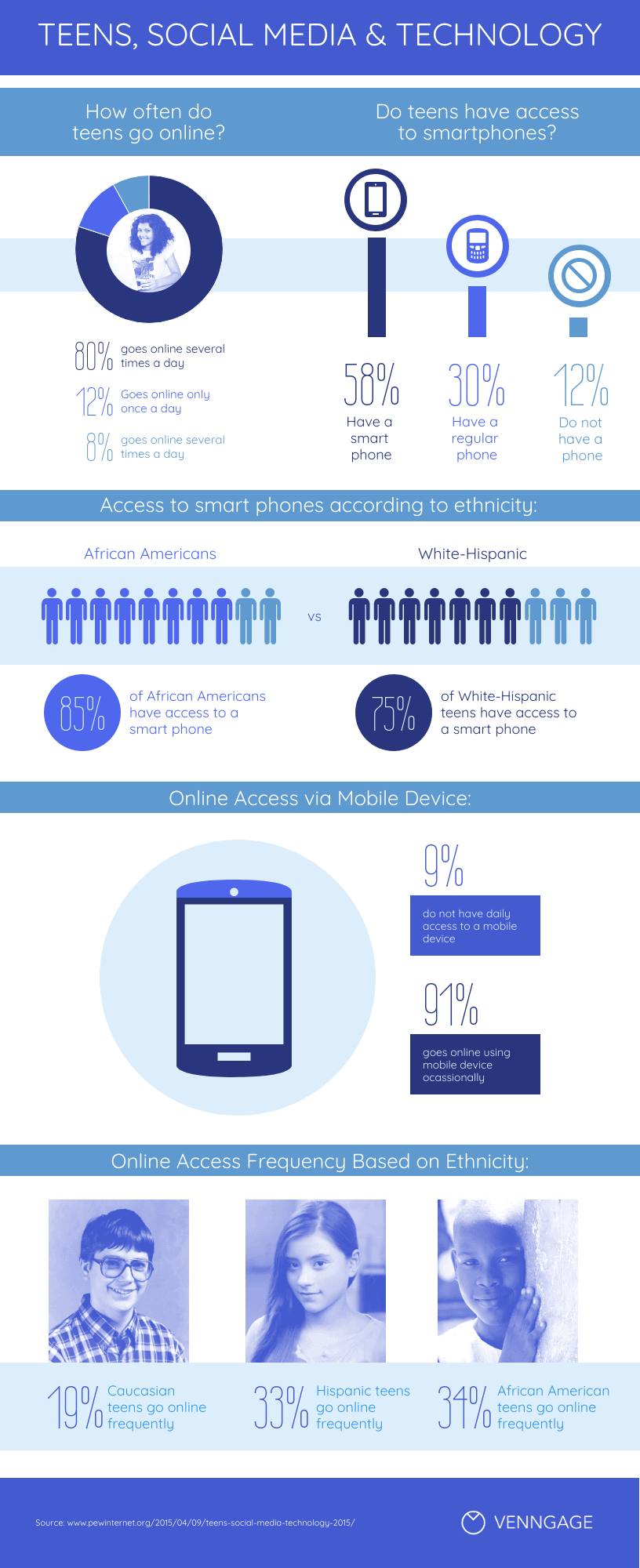
Image credit: Venngage
Multimedia that's relevant to your content's topic flat-out makes your content better and gives it an added SEO boost.
Your goal with every piece of multimedia you use (images, video, audio) is to add value to your content, either by making it more entertaining/engaging or adding needed support.
Some effective types of multimedia to consider adding to your content include:
- Screenshots
- Original images
- Charts and graphs
- YouTube videos
- Infographics
4. Include Data and Statistics

Quoting data and statistics in your content instantly gives your site and brand more authority.
How so, you ask?
Because it's hard to argue against cold, hard facts. And that's exactly what data and statistics provide.
Plus, they further support your statements and claims, making it far easier for your audience to trust what you're telling them.
Just be sure to link to the original sources for each statistic you quote.
On top of just being the right thing to do, it's also an easy way to increase your number of external links (something I'll touch on in just a sec).
5. Write Short Sentences and Paragraphs
I'm sure you know from experience:
People read differently online versus in print.
Where print readers tend to read every word of a page, online readers are scanners—meaning they jump from section to section, paragraph to paragraph.
And if your content is too convoluted, they're going to click the back button quicker than you can say "buh-bye page one ranking."
So, to make it easier on your audience (and keep them from leaving), write shorter sentences and shorter paragraphs.
What length should you aim for?
A good rule of thumb to follow is 10-20 words max per sentence and paragraphs between 2-3 sentences long.
6. Format Your Content for Maximum Ease of Use
This one's often overlooked, but oh so important.
If your content isn't presentable and neat, your audience is significantly more likely to stop reading. So formatting your page to maximize usability is essential.
There are two ways to do it:
- Make use of white space
White space is the blank spaces (or: margins) between both your written and visual content.
It balances the design of your page and better organizes the information, thus improving the overall visibility of your pages.
- Add more subheadings
Break up your content into digestible chunks with the use of subheadings.
Subheadings act as mini-headlines for each section of your content. With that in mind, make sure you follow the same rules when crafting subheadings as you do for crafting headlines.
7. Include External and Internal Links
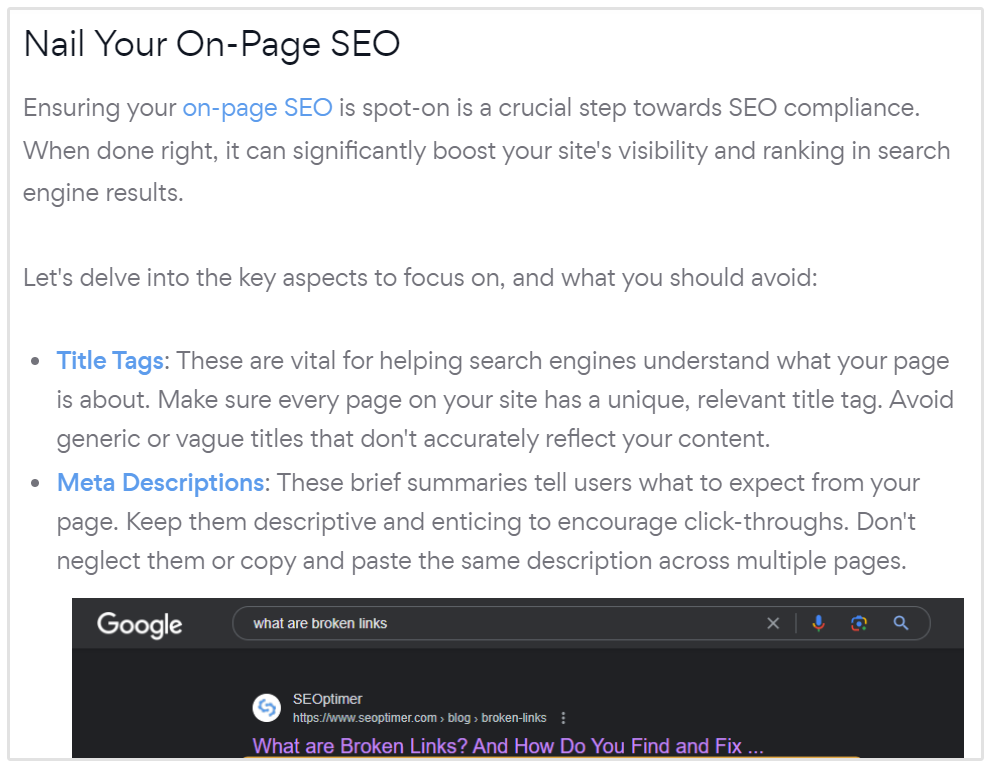
Links in your content serve two main purposes:
1. Add value to your content by directing your audience to useful resources
2. Keep visitors on your site for longer, thus boosting dwell time
There are two types of links to include in your content, each one corresponding to one of the main purposes above.
External Links
External links lead to other websites and either support the claims made in your content (like data and statistics) or direct your audience to helpful resources.
They're also an effective way of building more organic backlinks (more on this in a minute).
Internal Links
Internal links serve the same purpose as external links but point your audience to content that's already published on your own site.
These links help boost dwell time and reduce bounce rate on your site, which in turn helps your SEO.
How many links should you include in your content?
For external links, use as many as you need. For internal links, a good rule of thumb is to incorporate between 2-4 links.
8. Add Social Share Buttons
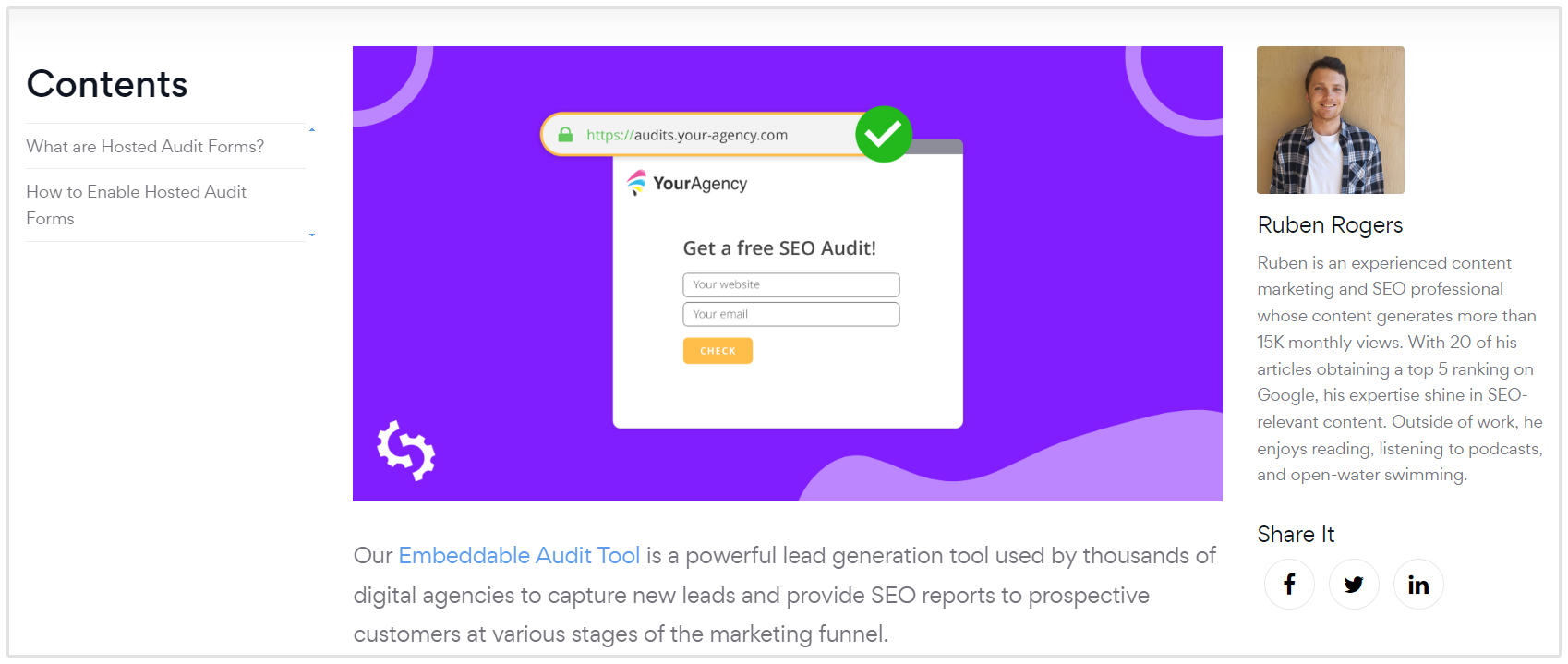
The more eyes on your content, the better the chances you'll earn quality organic backlinks.
One of the easiest ways to get your content in front of more people is to include social share buttons in your posts.
Social share buttons allow visitors to easily share your post on various social media channels like Facebook and Twitter.
If you use WordPress, you can easily add social share buttons to your pages with a plugin. You can find both free and paid plugins here.
2. The Strategies: Active Organic Link Building
By now, you have all the tools necessary to start creating some killer content. And that alone can start getting you a few quality organic backlinks.
But while you wait for your awesome content to pick up organic backlinks naturally, you can earn even more organic links to your site with these three powerful methods.
Guest Posting

Guest posting is used by today's top marketers to get organic backlinks with massive authority.
And it's not nearly as difficult as it looks.
Here's what you need to do:
- Find guest post targets. Find sites that aren't direct competitors but are related to your niche or industry. Compile a list that includes contact information for the site's owner or publisher for when you're ready to make your pitch.
- Generate guest post ideas. After you've found a target, research what's trending and most popular within your industry at large and the target site. Then, come up with an idea that you're confident is going to get their attention and be useful for their audience.
- Pitch your post idea. Next, contact the person in charge of publishing for the site and pitch them your idea. Keep it conversational and friendly. It also doesn't hurt to "warm them up" first by making a few quality comments on their site or sharing their content via social media (and tagging them in it).
- Write your post. Once your pitch is accepted, it's time to write your post. Follow all of the tips and guidelines found in this guide and you'll be set! Just make sure you follow the site's publishing guidelines while writing it. Also, don't forget to include at least one link pointing back to the page you want to receive a quality backlink.
- Follow up. Once your post is published, do the following: Promote the post via social media, respond to all the comments on the post, and send a thank you note to the site.
If your post is a hit, you can pretty much bank on them contacting you in the future to write more posts.
If you want to dive deeper into guest posting (and I recommend you do), then I encourage you to check out this awesome guide from Neil Patel.
Become a Contributor
There are sites that use regular contributors to write content for their blog—meaning these people post multiple articles per month on a regular basis.
This allows you, as the contributor, to create a regular stream of both organic backlinks and referral traffic to your site (possibly every month).
How do you find sites to contribute to?
For starters (and as I mentioned earlier), guest posting is a great "in" for becoming a contributor in the future if the site in question isn't currently looking for one.
And Google is your best friend when it comes to finding sites that are looking for contributors. Searches like keyword + "become a contributor" can help you uncover solid leads.
Once you've secured a spot, make sure you do the following:
- Write high-quality content with every post.
- Meet your deadlines every time.
- Make sure your posts are polished when submitted.
- Always be open to making edits and follow the site's publishing guidelines.
Influencer Outreach
Influencer outreach is exactly what it sounds like. It involves contacting key influencers in your industry who can spread the word about your new (and awesome) piece of high-quality content.
Having your link shared by an influencer can potentially send tons of referral traffic to your site while also earning you valuable organic backlinks.
To put it plainly: Influencer outreach is always worth it.
Here are a three effective ways to reach out to influencers in your industry:
Let Them Know You Linked to Their Site Within Your Post
This one's simple to do:
First, include a link to the influencer's site within your post (but only if and when it adds real value).
Then, once you've published the post, reach out to the influencer and let them know you linked to them. Ask them to check the link and make sure everything’s correct.
If your content is good enough, sometimes this is all you need to do to persuade them to share the post (or link to it within their own content—thus earning you a highly valuable backlink).
At the very least, you've at least placed yourself on their radar. That way, when you reach back out to them in the future with another proposition, they'll most likely be a bit more receptive.
Let Them Know About Broken Links
This strategy can be a game changer for your site (especially if you consistently write engaging content).
The basic premise is that you find broken links on relevant websites, inform the site owner of the broken link, and then recommend that they link back to a page on your site to replace the dead link.
Why does this work so well?
Because no one wants dead links on their site.
And if you're nice enough to point it out to them, they'll immediately be more receptive to replacing the dead link with a link of your own (so long as it's relevant).
So, when you come across a broken link (and have a suitable replacement), reach out to the site owner via email or instant message and include the following:
- Use the recipient's first name
- Tell them about the broken link
- Show them exactly where it is
- Suggest replacing the dead link with your own
- Comment on why your link is a good replacement
Note: Broken link building is a numbers game. So don't expect a high conversion rate. If you convert one out of every 10 people you contact, pat yourself on the back.
Ask for Quotes
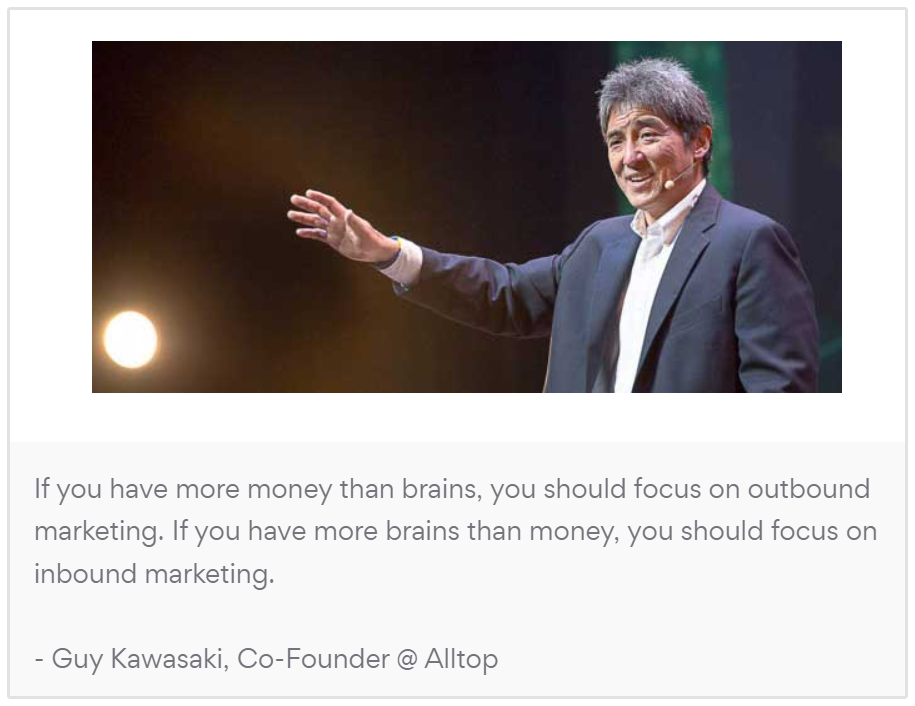
This trick does two things:
1. It improves the quality and increases the authority of your post.
2. It gives the influencer extra incentive to link back to your site.
Here's what to do:
First, create a post that requires or recommends outside expertise. This could be a post that features nothing but quotes from industry experts (like this one), or a topic within a post that could use a well-written quote.
Then, write an email to an influencer requesting they provide a quote for a post you're writing. Include the following in the email:
- Use the influencer's first name
- Explain why you're requesting a quote from them
- Briefly describe what your post is about
- Tell them you'll include a link back to their site
Once they provide you with the quote, put it into your post with a link back to their site.
Next, after the post is published, shoot the influencer an email that lets them know the post has been published (include a link to the post in the email).
And that's it.
If all goes well, they'll check out the post, think it's high quality (because it will be, right?), and then let their followers know that they've contributed to a post on your blog (and link back to it).
If they link back to it from their site, then you now have yourself an organic backlink!
7 Additional Ideas for Getting the Attention of Key Influencers
Why stop there, right?
Here are some other ways you can get the attention of powerful influencers in your industry:
1. Prove their methods work by publishing a case study
2. Share their content on social media
3. Write a (positive) blog post about them
4. Attend their webinars
5. Write a detailed review of their product or service
6. Create content that targets their audience
7. Repurpose their content (with their permission, of course)
You're almost ready to be let loose and start creating content that attracts the right people—and the right backlinks.
But before you go, there's one more priceless tip I want to share with you to keep your organic link building going strong...
...and that's how to never worry about finding new organic backlink sources ever again.
3. Future-Proofing: New Organic Link Building Opportunities
Having a steady stream of link building opportunities is imperative for a productive link building campaign.
Now, you could spend countless hours scouring the interwebs in search of quality sites to link to.
Or you could make your life infinitely easier by letting a piece of software do it for you.
My recommendation, of course, is to let SEOptimer do all of the "heavy lifting" for you.
What it does is take your top competitors and hand-feed you the exact sites that are linking to them—all without you having to lift a finger.
(Do I even need to state just how powerful this is?)
After that, all you need to do is a bit of super-simple analysis to determine if the site in question is worth pursuing for a backlink.
Here, I'll show you how to set it all up:
How to Use SEOptimer to Mine Endless Organic Backlink Sources
First, if you haven't already, sign up for your free, no-risk trial of SEOptimer.
Once you've signed up navigate to the Backlink Research feature and add your competitor domain to see their entire backlink profile.
SEOptimer will show you their Domain and Page Strength, the number of backlinks, and referring domains.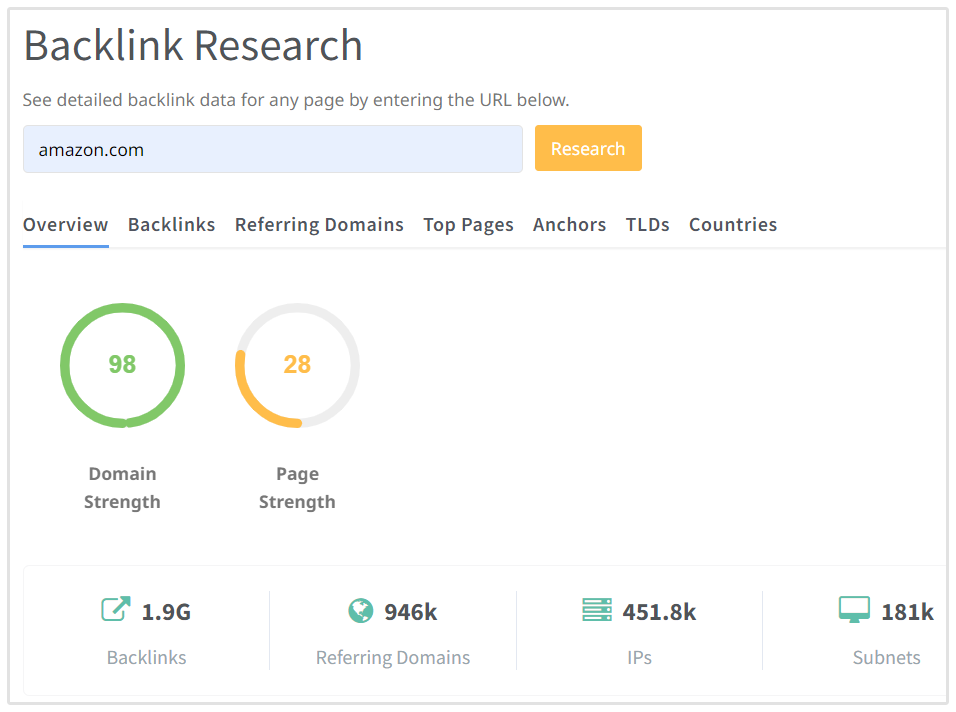
Next, click on the Backlinks tab, to see a list of all the backlinks SEOptimer has found for this competitor:
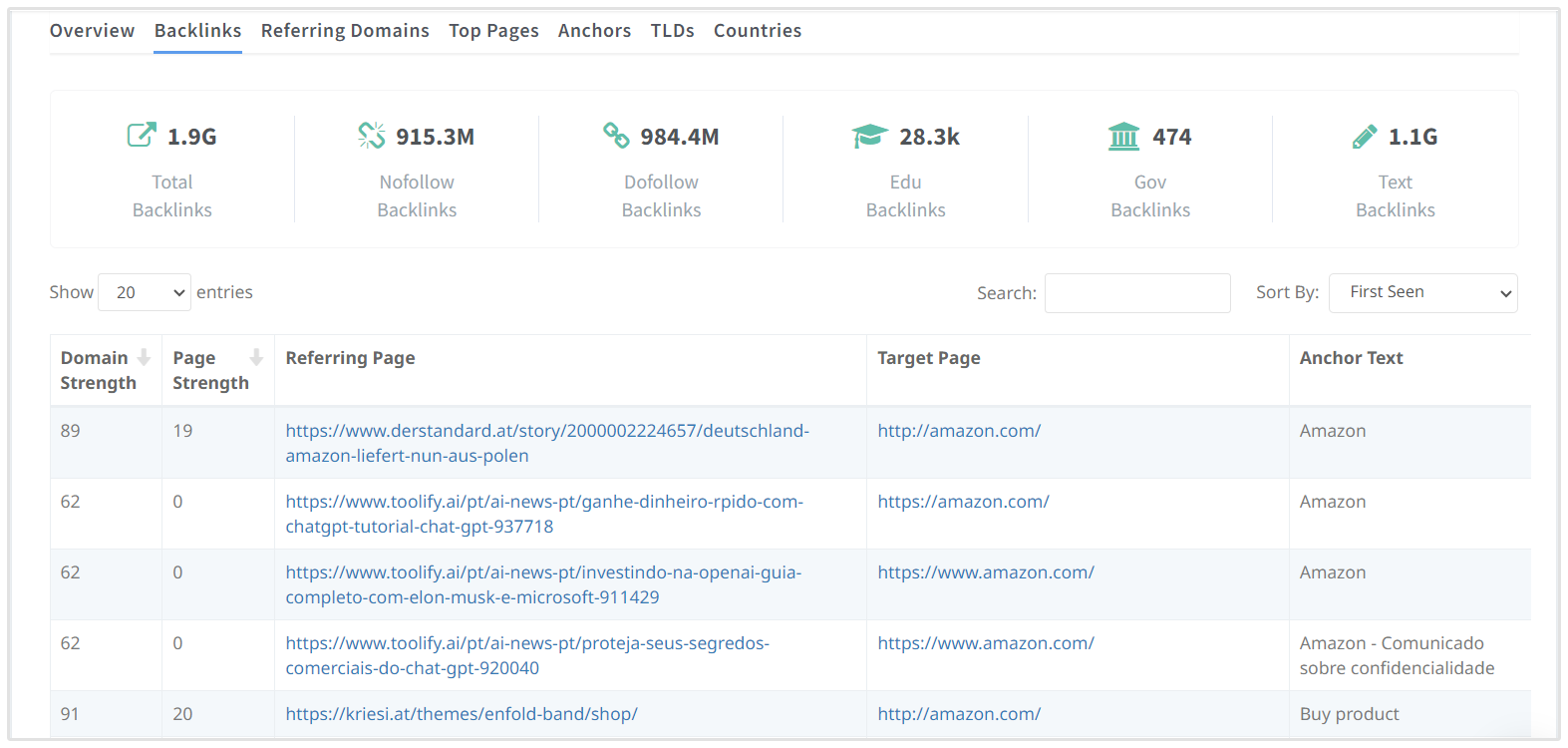
Finally, once you find a potential opportunity, it's time to put the strategies we discussed in the previous sections into play (creating high-quality content, influencer outreach, etc.) to score an impressive high-quality organic backlink.
Where to Go from Here
Now that we've covered the essentials for getting more organic backlinks, it's up to you to take action on what you learned.
Will you create a uniquely original piece of high-quality content, expand on a pre-existing strategy or repurpose an old post on your site that's in need of updating?
Regardless of which you choose:
Get it done using everything we discussed above, then get it in front of as many key influencers as possible, and then rinse and repeat.
Happy organic backlink building!



